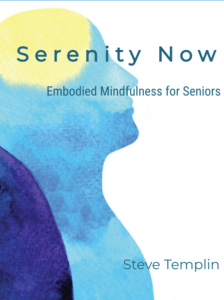Here’s a simple process to integrate your brain function and assist in relieving pain or anxiety, and other symptoms, as well.
First, we should review how pain and anxiety can be triggered by the brain in the first place.
Old, unfinished and often unacceptable emotional experience from the past can serve as raw fuel for triggering today’s emotional reactions, physical pain, and other symptoms.
This is the same mechanism that explains PTSD flashbacks. Dr. Dan Siegel, a psychiatrist and the creator of Interpersonal Neurobiology, uses the term implicit memory to describe this unintegrated experience from the past.
This old emotional experience is vulnerable to being triggered in present time because it was never fully integrated into memory by the hippocampus.
Excessive stress chemistry inhibits hippocampal function and leaves us with a reservoir of unintegrated emotional energy and memory that’s always vulnerable to being triggered and re-activated, and experienced as if it is our present reality.
You may find that it’s a simple thought or feeling that serves as the trigger that brings unfinished emotional business from the past into our present.
Commonly, in its milder form we may experience this triggering as ´having our buttons pushed´.
Depending on how we’re wired to deal with that activated memory we may experience a mood shift like feeling anxious, experience physical pain, or generate virtually any kind of symptom.
A Brain Integrating and Symptom Neutralizing Strategy
Here’s an approach for activating the hippocampus to begin the process of integrating old bits of emotional memory. This reduces the raw fuel for uncomfortable moods, behaviors, pain and other symptoms as well.
The following process will work more dependably and fluidly with daily practice. So, practice, practice, and practice to change and reprogram your brain function to support integration rather than fragmentation.
Step One:
Connect with your current bodily sensations or feelings or pain in a curious, patient, and caring way. (This step gets you out of your head and into the direct experience of your body and fields of energy and begins to change your brain waves towards a more synchronous alpha state)
Step Two:
Name or label the experience while you continue to feel it and breathe slowly. For example, say “This tension or pain in my gut” or ” A scared feeling in my chest”, just say whatever fits and keep it simple. This step helps to integrate the left hemisphere (words) with the right hemisphere (sensations).
Step Three:
Name or bring to mind something that makes you feel good or is heart warming and feel the feeling while you continue to breathe slowly. For example, you can mention “My favorite beach” or “I love my dog” and feel the feelings. Just remember to keep it simple.
Step Four:
Alternate steps 3 and 4 while you breathe slowly. This combination of alternating the experience of symptoms and the experience of warm-hearted feelings creates an inner experience of safety and nurturance that helps to activate the hippocampal integration of old memory and removing the fuel for symptoms.
A New Perspective – Interpersonal Neurobiology
I’ve been pleasantly surprised over and over again to see a variety of symptoms recede or disappear through the use of self-regulation techniques alone.
In my office, I routinely start a session with a patient sitting, often connected to the Heart Rate Variability software, while they practice some variety of focused attention and breath awareness. In general, I call this self-regulation practice.
This process alone often resolves symptoms or begins the process of resolution before we move to the therapy table.
This is always an exciting and welcome experience for my patient and for me.
The self-regulation tools I use are an eclectic set of practices and perspectives that I’ve gathered over thirty years in practice.
What’s exciting now is that we can see from a neurological point of view how much of this self-healing takes place. Specifically, Dr. Dan Siegel’s work in Interpersonal Neurobiology is providing this understanding.
Ideally, this new brain-based understanding of how we become ill and how we heal will make it easier for me to explain just what is happening when self-regulation strategies work.
Most importantly, I believe that when patients understand that this healing is a natural function of their own brain and nervous system they will participate more consistently and confidently in their at home brain healing practices
Be Well!

 Steve is a retired Doctor of Oriental Medicine, Acupuncture Physician, and HeartMath Trauma-Sensitive Certified Practitioner with over 35 years of clinical experience in the fields of Energy Medicine, Energy Psychology, and Biofeedback.
Steve is a retired Doctor of Oriental Medicine, Acupuncture Physician, and HeartMath Trauma-Sensitive Certified Practitioner with over 35 years of clinical experience in the fields of Energy Medicine, Energy Psychology, and Biofeedback. 